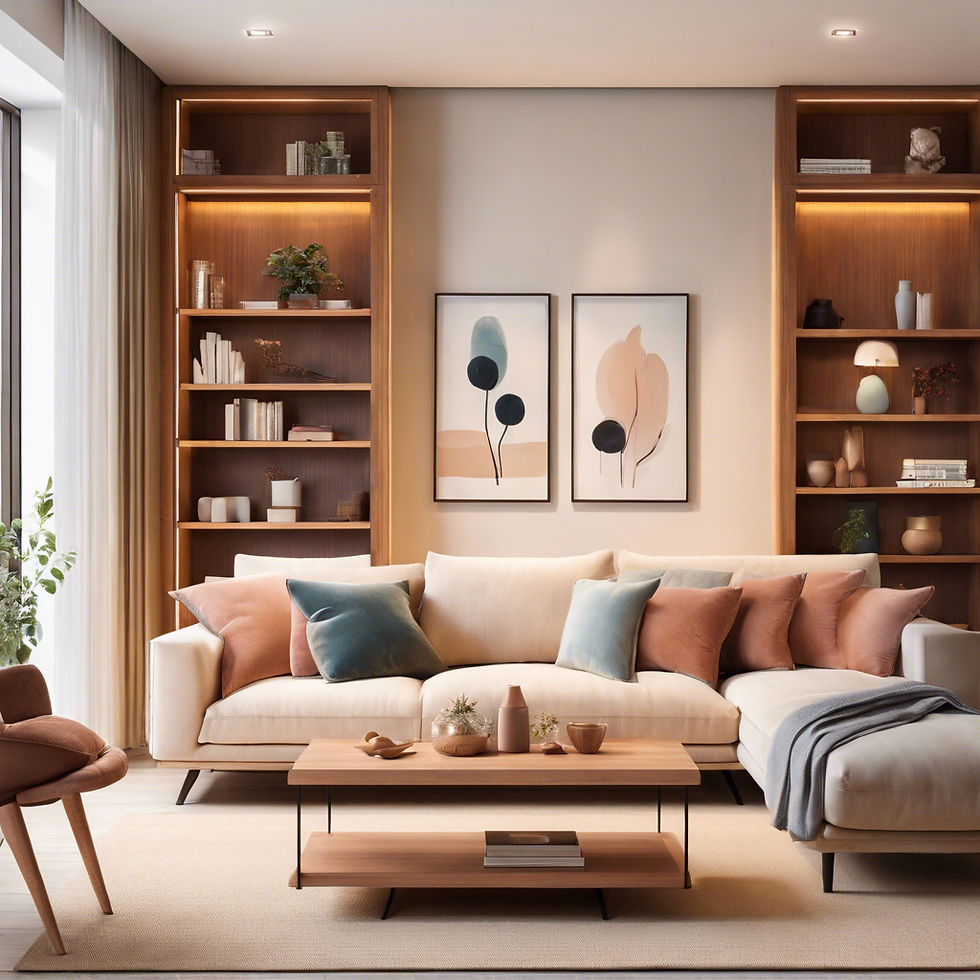How to Avoid the Most Common Interior Design Mistakes (Even with Great Taste)
- Antonio
- Jul 23
- 3 min read

Taste Isn’t the Problem — Strategy Is
Let’s be honest: Most homeowners and property owners in London have great taste.
You know what you like. You’ve probably saved hundreds of Pinterest images. You’ve scrolled every “dream home” hashtag and binge-watched more renovation shows than you care to admit.
And yet…When it’s time to bring it together, something gets lost in translation. Rooms feel “off,” layouts don’t flow, the mood never quite lands.
It’s not your fault. It’s just that good design needs more than inspiration. It needs structure. And that’s exactly what we’re here to provide.
Let’s walk through some of the most common interior design mistakes — and how to avoid them like a pro.
❌ MISTAKE 1: Starting with Paint
Yes, it’s tempting. A lick of colour feels like progress. But it’s also one of the easiest ways to trap yourself into a theme that clashes with everything else.
Instead: Finalise your furniture, layout, lighting, and soft furnishings first. Paint is the thing that ties it all together — not the starting point.
❌ MISTAKE 2: Buying Everything from One Place
That matching sofa, armchair, and coffee table set might seem cohesive in the showroom. But once it’s home, it can feel flat and lifeless — like a staged Airbnb.
Instead: Mix eras, materials, and sources. Pair high-street with bespoke. Let your personality shine through by layering.
❌ MISTAKE 3: Ignoring Lighting Design
Bad lighting can make a beautiful room feel like an office cubicle. Too cold, too harsh, or coming from just one overhead bulb? You’re wasting the vibe.
Instead: Use 3 layers — ambient, task, and accent. Lamps, wall lights, pendants, dimmers. Lighting is the mood-maker.
❌ MISTAKE 4: Poor Scale and Proportions
That oversized sofa you fell in love with? It dominates your entire living room. The teeny rug? It makes the room feel even smaller.
Instead: Measure. Always. Then mock it up with masking tape. Use scale tools or get professional help. Your home isn’t a warehouse — every inch matters.
❌ MISTAKE 5: Following Every Trend
Yes, sage green kitchens and fluted wood panelling are everywhere — but will you still love them in five years?
Instead: Prioritise timeless elements (joinery, layouts, floors) and use trends in accessories or art that are easy to change.
❌ MISTAKE 6: Forgetting Functionality
You bought that stunning glass coffee table… and now stub your toe on it three times a week. Or you forgot plug sockets near the bed. Or your storage almost fits your lifestyle.
Instead: Design for real life. Think kids, pets, guests, hobbies, cooking habits. Beautiful doesn’t have to mean impractical.
❌ MISTAKE 7: Going It Alone Without a Plan
This is the big one. It’s not that people don’t care. It’s that they don’t have a structure. One wrong purchase leads to another — and before you know it, the space feels wrong.
Instead: Have a cohesive design strategy from the start. One mood board. One colour story. One floor plan. Whether you hire help or DIY, structure is everything.
✅ What to Do Instead: The Smart Homeowner’s Process
Start with how you live
Plan your space around function, light, and flow
Build your design story (colours, materials, textures)
Choose your key investments
Then paint last
Layer in personal items — books, art, keepsakes
Ask for help when it’s outside your comfort zone
Our CRAFT System Insight: Clarity. Real Value. Authentic Choices. Function. Trust. It’s not just how we design — it’s how we help you decide.
💬 Final Thought: You’re Not Bad at Design — You Just Deserve Better Support
Your home should feel like it fits you. That’s not a matter of having good taste — it’s about knowing what to do with it.
And if you need someone to translate your vision into a space that flows, functions and feels like home?
That’s exactly what we’re here for.
✅ Let's Get to Action:
📞 Book a no-pressure consultation to chat about your project


Comments